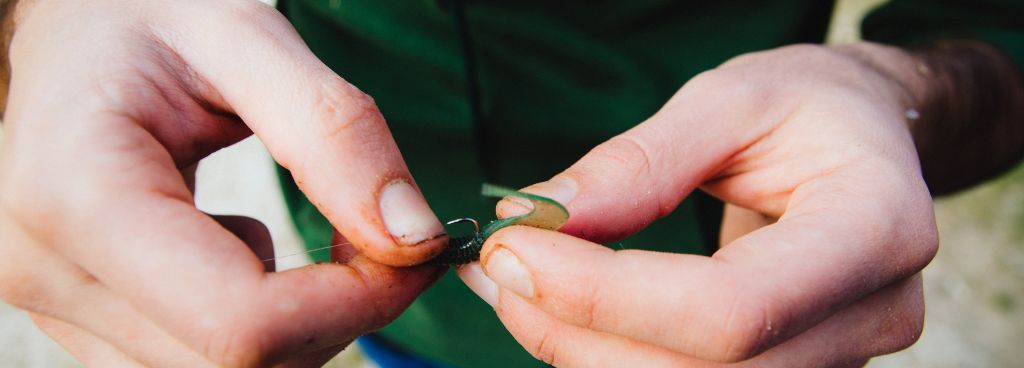Stories Worth Reeling In...
Last Updated on September 8, 2023
In the world of fishing, selecting the right bait can make all the difference between a successful day on the water and going home empty-handed. Each type of bait has its unique advantages and drawbacks, and the choice isn’t always straightforward.
In this exploration of “Live Worms vs. Artificial Worm Lures,” we’ll dive into the intricacies of this bait battle. By the time you’ve finished reading, you’ll be better equipped to make an informed decision for your next fishing excursion.
Table of Contents
Ah, the timeless appeal of live worms as fishing bait – there’s something undeniably captivating about these wriggling wonders.
First and foremost, it’s all about that natural allure. Live worms exude a scent, movement, and appearance that’s as close to real prey as it gets.

The versatility of live worms is also a massive plus. You can use them in various fishing scenarios, from freshwater to saltwater, and they’ll consistently attract bites. Whether you’re targeting bass, trout, or panfish, live worms have a reputation for delivering results.
Now, let’s shift our focus to the enticing world of artificial worm lures, which, I must say, have their own unique set of perks when it comes to angling adventures.
Unlike their live counterparts, artificial worm lures don’t require refrigeration or a constant supply of fresh soil. They’re always ready to go, no matter when the fishing bug bites.

Convenience is another ace up their sleeve. With artificial worm lures, there’s no need to make a pit stop at the bait shop or spend time digging for live worms. You grab your tackle box, pick out your favorite artificial worm lures, and you’re good to go.
But here’s where artificial lures truly shine – customization. You can tailor your approach in ways that are just not possible with live worms. Want a specific color or size? You got it. Looking to mimic a particular type of worm or insect? No problem.
Now, let’s get real about live worms. While they have their allure, they’re not without their quirks and challenges.
First and foremost, there’s the matter of maintenance. You’ve got to keep them cool, usually in a fridge or a cooler with some soil.
Speaking of which, live worms have a shelf life. Unlike artificial lures that are good to go whenever live worms can kick the bucket if you don’t use them in time.
Now, here’s where things can get a bit dicey for some anglers – ethics. Catch-and-release anglers, in particular, might grapple with the idea of impaling a live creature on a hook. It’s a debate as old as fishing itself.
And have you ever had to deal with a container full of live worms that decide to stage a mass escape? It’s a situation that can go from peaceful to chaotic in seconds.
Now, let’s turn our attention to the flip side of the coin – the downsides of using artificial worm lures.
First up, durability. Artificial worm lures, no matter how well-crafted, can wear out. Fish, especially toothy predators like pike or muskie, can quickly shred soft plastic worms. This means you might need to replace your lures more frequently than if you were using live bait.
Then there’s the matter of scent. Live worms naturally release enticing scents into the water, which can be a huge draw for fish. Artificial lures, on the other hand, don’t have that same aromatic appeal.
Realism is another factor to consider. While artificial worm lures have come a long way in mimicking the appearance of real worms, they’re not always spot on. Some fish, especially those in heavily fished waters, can become wary and may scrutinize your bait more closely.
Choosing between live and artificial worms isn’t just about personal preference; it’s also about adapting to the specific conditions of your fishing trip. Let’s dive into how various factors come into play.
Water Clarity: One critical condition to consider is water clarity. In murky or turbid waters, fish often rely more on their lateral lines and sense of smell than on visual cues. This is where live worms can shine.
On the other hand, in crystal-clear waters, where fish have a better view of their surroundings, artificial worm lures may be more effective. Their lifelike appearance can entice even cautious fish.
Water Temperature: The temperature of the water you’re fishing in can also influence your bait choice. In colder waters, fish tend to be less active and may be less willing to chase down prey. Live worms, with their tempting scent and movement, can be hard for sluggish fish to resist.
In warmer waters, fish are often more aggressive and willing to strike at faster-moving lures like artificial worms.
Target Species: Different species of fish have varying preferences when it comes to bait. Some, like catfish and panfish, are generally more responsive to live worms.
Others, such as bass and pike, may be more inclined to go after artificial worm lures. Knowing the preferences of your target species can help you make the right call
Now that you’re well-versed in the world of live worms and artificial worm lures, it’s time to talk about how to present them effectively to those elusive fish. Here are some tips to help you up your game:
1. Hook Placement: When using live worms, consider how you hook them. For smaller worms, like mealworms or redworms, threading them onto the hook once or twice can provide a natural presentation.
Larger nightcrawlers or earthworms can be hooked multiple times to create a more tempting target. When using artificial worm lures, make sure they’re securely attached to the hook, so they mimic the movement of a real worm.
2. Casting Techniques: The way you cast can impact your success. For live worms, cast gently to avoid sending them flying off the hook. A gentle lob near your target area is often sufficient.
With artificial worm lures, experiment with different casting techniques. Sometimes a soft, subtle cast is best, while other times a more vigorous action can attract attention.
3. Retrieve Styles: The way you retrieve your bait matters. For live worms, a slow, steady retrieve can mimic natural movement. Keep in mind that live worms might wiggle or squirm on the hook, adding to their allure.
With artificial worm lures, vary your retrieval speed and style. Sometimes a jerky, erratic retrieve can trigger a strike, while other times a smooth, consistent motion is more effective.
Let’s tackle some common queries and troubleshoot common issues:
Live worms shine when you want to entice fish with natural scent and movement. Use live worms in situations where fish are being picky or during colder months when fish are less active.
Keep live worms in a cool, moist environment, like a worm box or container with damp soil. Avoid direct sunlight and excessive heat, which can dry them out. Replace their bedding regularly.
Store artificial worm lures in their original packaging or specialized tackle boxes to prevent tangling. Keep them away from direct sunlight and extreme temperatures.
Fish can be finicky. If they’re not interested, try changing your bait type, presentation style, or location. Experiment until you find what works.
Ensure the hook is securely threaded through the worm. You can also use a bait threader or wrap a piece of worm around the hook shank to keep it in place.
Dispose of old lures by recycling them at specialized tackle shops or using recycling programs if available in your area. Avoid tossing them into bodies of water.
As you head out on your angling adventures, remember that the beauty of fishing lies in its endless possibilities and the thrill of exploration. Share your experiences, tips, and insights with your fellow anglers.
Together, we can make every fishing trip a memorable one. So, gear up, embrace the waters, and let your fishing tales become legends in the making. Happy fishing!